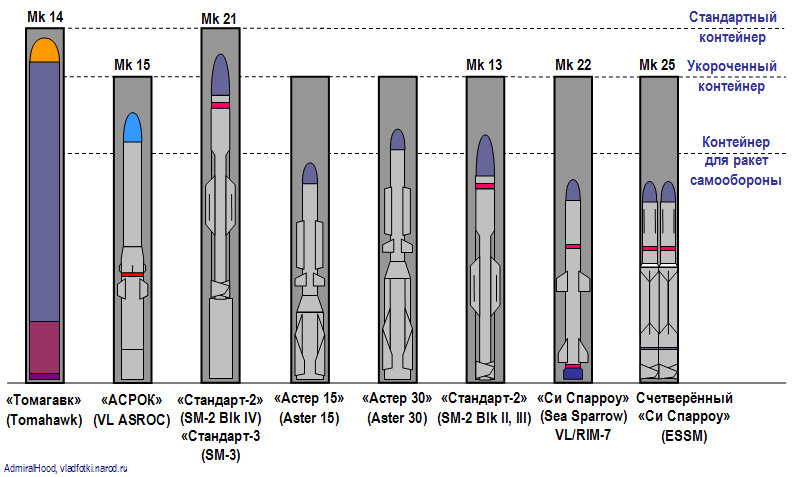Suomen jäänmurtajista kirjoitettiin jenkkilälässä
http://www.thedrive.com/the-war-zon...-corvettes-with-serious-air-defense-abilities
Finland's Getting Ice-Breaking Missile Corvettes With Serious Air Defense Abilities
The four all-new ships will be uniquely suited to Finnish requirements in the confines of Baltic Sea amid growing threats from Russia.
BY JOSEPH TREVITHICK FEBRUARY 21, 2018
The U.S. State Department recently approved the potential sale to Finland of more than $800 million worth of RGM-84 Harpoon anti-ship missiles,
RIM-162 Evolved Sea Sparrow surface-to-air missiles,
Mk 41 vertical launch systems, and other associated items. Depending on how that country decides to proceed with its Squadron 2020 naval modernization program, some of those systems could go into a new class of ice-breaking multi-purpose corvettes, as well as end up on older ships as part of various planned upgrade projects.
The Defense Security Cooperation Agency, the U.S. military’s main foreign military sales office, announced the possible arms packages in
three separatenotices in February 2018. The announcements say that the 100 RGM-84Q-4 Harpoon Block II+ Extended Range missiles, plus another dozen older RGM-84L-4s that Finland would upgrade to that standard itself using conversion kits, would arm its existing
Hamina-class missile boats and shore-based coastal defense batteries. The 68 RIM-162s, also known as ESSMs, and the four Mk 41s would be part of the armament package on the four all-new corvettes the country is building under the Squadron 2020 plan.
It is important to note, however, that U.S. government approval does not mean a country has agreed to purchase the weapons or other systems in question. Finland is in the middle of a competition to select a new anti-ship missile to replace its existing Swedish-made
RBS-15 Mk IIs and Boeing’s Harpoon is just one potential option. The other contenders are the
RBS-15 Mk III+ from Sweden’s Saab Bofors Dynamics, the
Naval Strike Missile (NSM) from Norway’s Kongsberg, and latest iteration of the European missile consortium MBDA’s
Exocet MM40.
The same is true, perhaps even more so, with regards to Finland’s future multi-purpose corvettes. The Finnish Ministry of Defense is pursuing a two-track plan to develop and purchase those ships, having hired the country’s own
Rauma Marine Constructions (RMC) to craft the basic hullform in April 2017.
MKFI VIA WIKIMEDIA
The Finnish
Hamina-class missile boat
Tornio, which could receive Harpoon anti-ship missiles as part of a ongoing upgrade program.
In 2018, Finland expects to
award a separate contract for the systems that will go into those ships. Germany’s
Atlas Elektronik,
the Canadian subsidiary of American firm Lockheed Martin, and Swedish defense contractor
Saab are bidding on that deal. Atlas Elektronik and Saab both already supply systems for various Finnish Navy ships.
How RMC defines the basic ship design and its capabilities is likely to have impact on whether or not the new corvettes will feature the Mk 41s, which can hold four ESSMs quad-packed in each launch cell. The
Sylver vertical launch system from France's DCNS is another option, but would require Finland to also choose MDBA's
Aster surface-to-air missile as the ship's primary air defense weapon.
And though the Finnish Ministry of Defense’s plan does call for the new corvettes to have a robust local air defense capability, it won’t necessary be the main focus for the engineers at RMC. “In the initial phase it was recognized that this type of new vessel with the required capabilities did not exist,” according to
an official primer on the Squadron 2020 project.
“The vessels on the market were not capable of mine-laying and navigating in ice,” it continues. “For a warship, the requirements arising from mine-laying and winter navigation are rare in the international context but they are essential for the Finnish Navy to fulfil its tasks.”
FINNISH MINISTRY OF DEFENSE
A rudimentary breakdown of the systems the Finnish Ministry of Defense wants on the new Squadron 2020 corvettes.
Finland’s shoreline is entirely along the Baltic Sea, much of which is frozen over or otherwise full of potentially dangerous ice floes during the winter. Some of the Finnish Navy’s ships, such as its two aging
Hämeenmaa-class minelayers, do have a limited ice-breaking capability, but its smaller missile boats, such as the
Hamina-class, have much more difficulty operating under those conditions.
“The endurance and sea-going capabilities significantly limit the performance of the
Hamina-class … in ice conditions and during rough sea,” the Finnish Ministry of Defense’s guide to the Squadron 2020 program notes. On top of the ice, “gale-force winds and the resulting wave heights restrict the operation of light naval units on the open sea. The significant wave height may reach six meters and more annually in the northern part of the Baltic Sea.”
The Baltic is already
an extremely confined space without those environmental hazards and an all-weather
ice-capable warship would be invaluable for the Finnish Navy. Finland isn’t alone in recognizing the importance of having combat vessels that can operate in extreme cold weather conditions, either. Russia, Finland’s most likely potential opponent in the region, is also developing ice-breaking
anti-ship missile armed corvettes, though it will most likely deploy to support the country’s expanding military operations
the Arctic.
PELLA SHIPYARD RUSSIA
An artist's rendering of Russia's future Project 23550
Ice-class missile armed, ice-capable corvette.
It’s the
constraints of the Baltic that also make
maritime mine warfareparticularly attractive in both offensive and defensive scenarios. This is again especially true with regards to Russia, which has significant naval assets
based in St. Petersburg and elsewhere.
Already historical antagonists, relations between the two countries have been steadily worsening in recent years, with Finland increasing its cooperation
with the United States and other members of
the NATO alliance and Russian officials threatening to retaliate
economically and militarily in response. Finnish authorities already accuse Russian military aircraft of
routinely and provocatively violating their airspace.
In a naval engagement, Russian ships and submarines would have to transit through the Gulf of Finland – less than 100 miles across at its widest point – to get into the Baltic Sea proper and Finnish mines could easily constrain their movements. It could also limit the ability of naval reinforcements from Russia’s
Kaliningrad enclave to the south or elsewhere to rush into the area in a crisis.
As such, minelaying is an extremely important capability for the Finns, who have various dedicated minelayers already in service. In addition, depth charge racks on its small missile boats, they can also deploy mines. The primary type in Finnish service is Patria’s
Sea Mine 2000, which reportedly has features that make it hard to detect and multiple sensors – possibly including acoustic, magnetic, and other types – to both detect potential targets and discriminate between them to focus on the most valuable ships in a task force.
MKFI VIA WIKIMEDIA
Patria's Sea Mine 2000.
Finland does want the new corvettes to be truly multi-mission capable though, including a robust local air defense capability, which it plans to integrate with the countries overarching air defense command and control network, as well as the ability to conduct anti-ship and anti-submarine operations. Though RMC has not yet revealed the exact size and shape of the ship, existing requirements call for a vessel with both anti-ship and surface-to-air missiles,
torpedoes, and a main gun, possibly the same
Bofors 57mm automatic cannon found on the
Hamina-class missile boats and the
Hämeenmaa-class minelayers. The vessels will almost certainly have smaller cannons or machine guns for close-in defense.
Coupled with the naval mines, those stand-off anti-ship and anti-aircraft capabilities could help improve the Finnish military’s own freedom to maneuver in and around the Baltic Sea and its adjacent littoral areas. It would also force the Russians, or
any other potential opponent, to take those threats into consideration, potentially limiting their ability to operate in the region or otherwise disrupting their plans during an actual crisis.
The Finnish Defense Ministry video below shows how Hamina-class missile boats would cooperate with land- and air-based assets to defend Finland's Baltic shoreline in a crisis. The future Squadron 2020 ships should be significantly more capable.
A radar with air and surface search modes, a towed sonar system, electro-optical sensors, and electronic intelligence equipment will serve to spot and track targets, as well as give the ships important surveillance and intelligence gathering capabilities and improve their ability to operate in the Baltic Sea’s often poor weather. Deck-mounted launchers will be able to launch anti-missile decoys for self defense and could do double duty as a way to fire
rocket-propelled depth charges at hostile submarines.
It’s very likely the ships will also carry some form of electronic support measures and electronic countermeasures to defend
against enemy jamming systems or other electronic warfare attacks. The vessels' configuration will also have to take into account the increasingly likely possibility of operating in
a GPS-denied environment, as well.
Finland hopes the four new vessels will begin entering service sometime in the 2020s, effectively replacing the four older
Rauma-class missile boats, as well as the pair of
Hämeenmaa-class minelayers. The four upgraded
Hamina-class with their new anti-ship missiles will remain in service, as well, with the two types forming the bulk of the Finnish Navy’s combat capability though to at least into the 2030s. If RMC's design proves successful, Finland might also be able to be able to find foreign customers, including elsewhere in Scandinavia, who have similar requirements for a cold-weather capable combat vessel.
But the new Squadron 2020 corvettes, with or without American-made Mk 41 vertical launch systems and RIM-162 surface-to-air missiles, will be the only Finnish Navy warships able to conduct year-round operations in the Baltic, which will be vital capability for Finland to have for years to come.








 jään kuitenkin odottamaan vesille laskua ja lopullista hintalappua sekä toteutuneita varusteluhankintoja ennen kuin päätän omalta kohdalta oliko projekti onnistunut ja kaiken siihen kaadetun rahan arvoinen
jään kuitenkin odottamaan vesille laskua ja lopullista hintalappua sekä toteutuneita varusteluhankintoja ennen kuin päätän omalta kohdalta oliko projekti onnistunut ja kaiken siihen kaadetun rahan arvoinen  Tähän tapaan...
Tähän tapaan...

